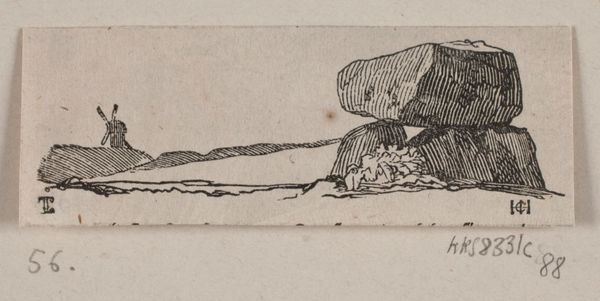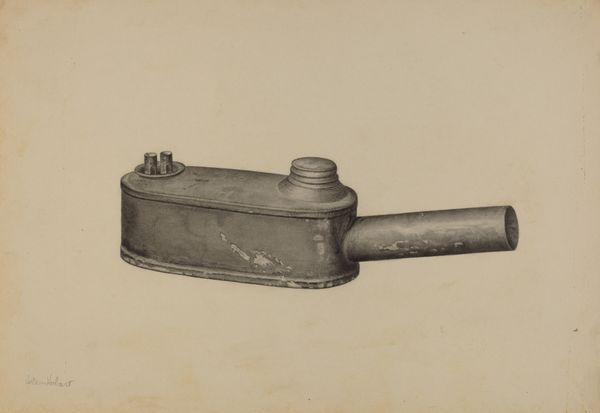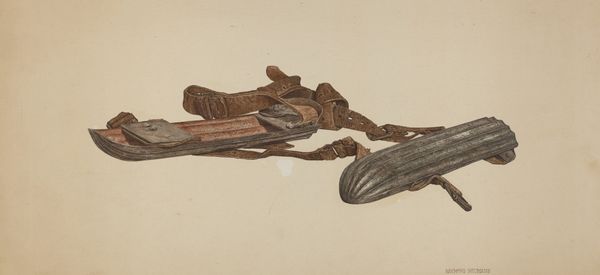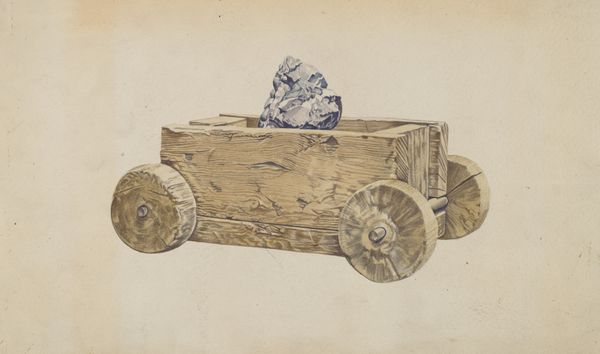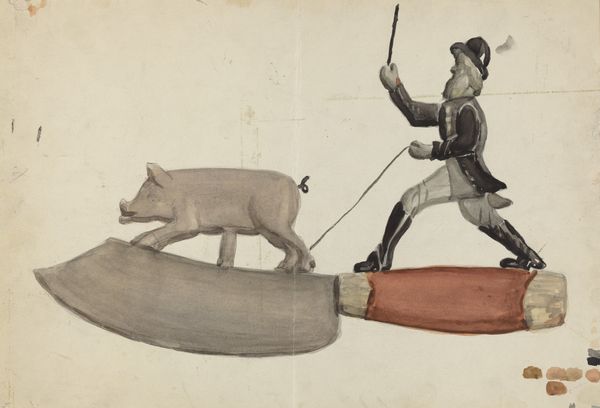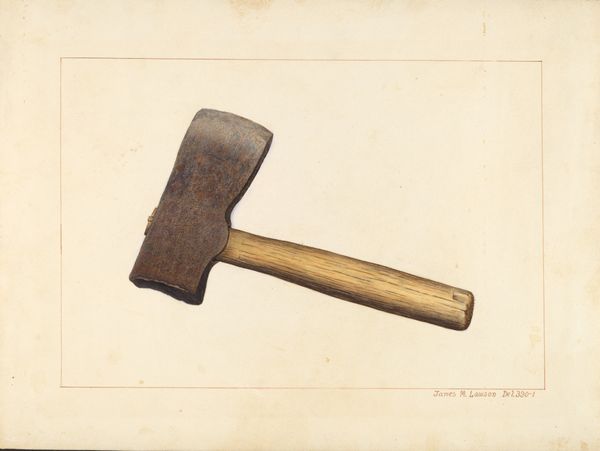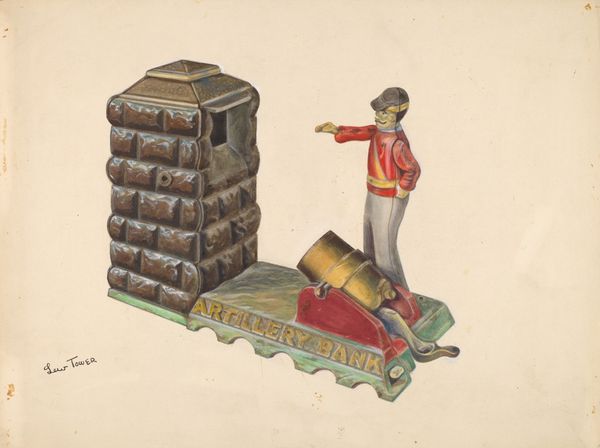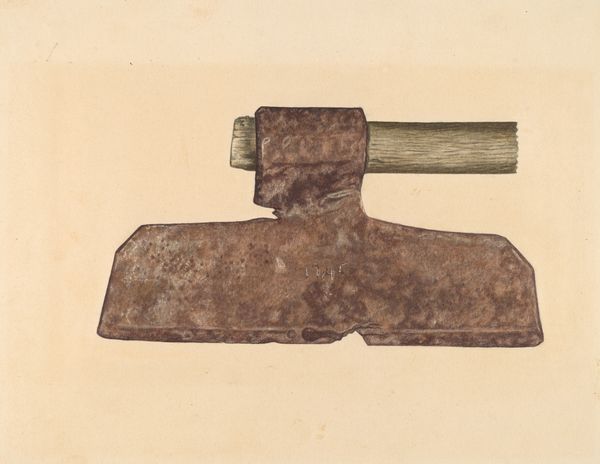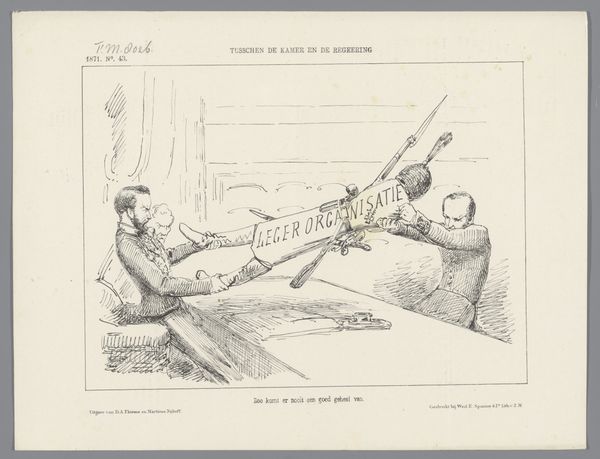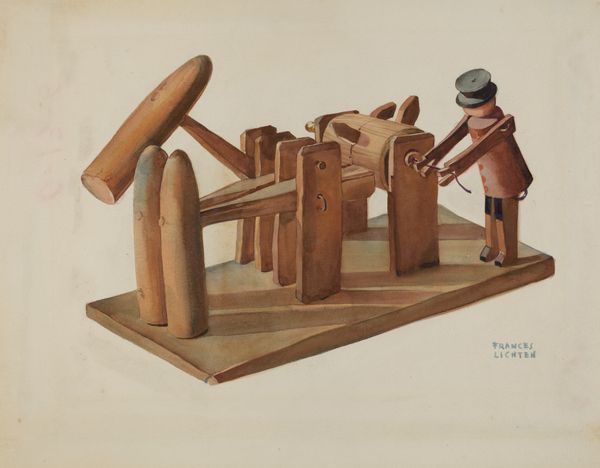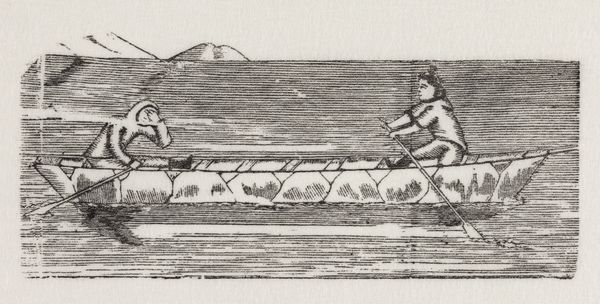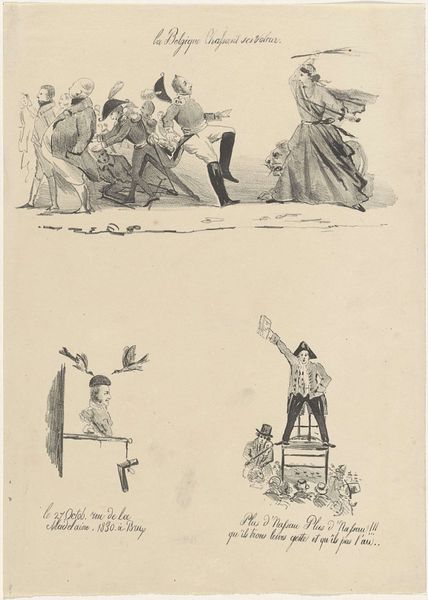
drawing, paper, pencil
#
drawing
#
negative space
#
landscape
#
figuration
#
paper
#
pencil
#
genre-painting
#
realism
Dimensions: overall: 29.8 x 43.1 cm (11 3/4 x 16 15/16 in.) Original IAD Object: 19" long; 8" high
Copyright: National Gallery of Art: CC0 1.0
Curator: We're looking at "Lumberjacks Sawing a Log," a 1939 drawing by Frank Eiseman, crafted with pencil on paper. What's your immediate impression? Editor: My first impression is how deliberately staged it feels, almost like a diorama. The figures and log seem somewhat disconnected, suspended in this pale negative space. Curator: Absolutely. This deliberate staging, I think, reflects a specific era. During the 1930s, under the shadow of the Great Depression, depictions of the working class gained prominence as both symbols of resilience and subjects deserving of social justice. Editor: I see that, and there's also something primordial about the image. Sawing wood is such an ancient activity, connecting us back through countless generations. Look at the crisp lines in the wood grain and the almost cartoonish expressions of the two men. Curator: This realism connects, or maybe *disconnects* us with complex debates about labor conditions during the New Deal era. We see here the romanticization of labor while issues regarding fair wages and safe work environments often went unaddressed. There's a real tension there, don't you think? Editor: Yes, especially with the men situated atop hewn timber. They almost appear to be rising out of earth. What would appear to be simply two men cutting wood also evokes symbolic meaning – progress at a heavy cost. They both seem rather rooted to a particular role. Curator: The image almost becomes allegorical. Gender roles also leap to mind. We're presented with this hyper-masculine portrayal, which speaks volumes about the societal expectations of men at that time. Editor: You’re right. Perhaps it’s about the visual language being employed. The lumberjacks as symbols aren’t tied just to manual labor; their strength as well evokes the psychological sense of power and mastery, control over the physical world. Curator: Indeed. The symbolic value of that imagery shaped identities of the era, both embracing a rugged ideal and imposing limitations on more inclusive portrayals of the human experience. It is hard to consider if they are even acting of their own agency as they complete their work. Editor: Well, thanks to our chat I'm walking away with a much richer understanding, as now I’m left chewing on the cultural signifiers present. Curator: Me too. It's images like these that challenge us to confront our histories.
Comments
No comments
Be the first to comment and join the conversation on the ultimate creative platform.

